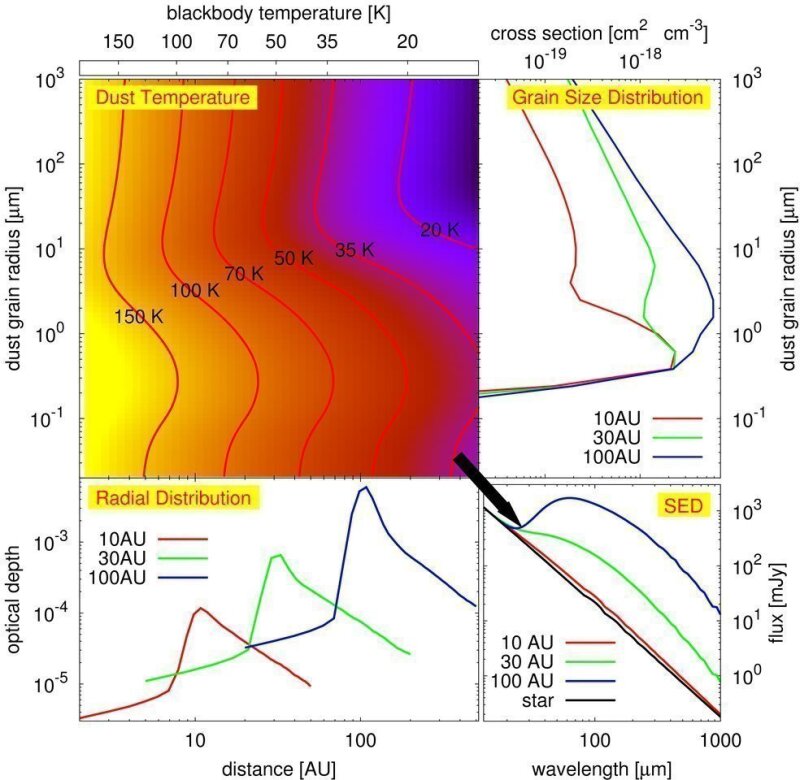Models of debris disks: Seeing dust, thinking of planetesimals
Debris disks are dusty disks that surround main-sequence stars. What is actually observed is the thermal emission of dust, which is produced in frequent collisions between star-orbiting planetesimals. The latter are small bodies that must have accreted at early epochs and survived possible planet formation processes. The planetesimals around a star are typically grouped in one or several belts, similar to the Kuiper belt and asteroid belt in the solar system.
Through debris disk studies, we want to learn about the properties of dust-producing planetesimal belts. However, debris disk observations are only sensitive to dust and not to its parent bodies. In our recent paper (Krivov et al., ApJ 2008, 687, 608-622)Externer Link we suggest a method of how to retrieve properties of invisible planetesimal belts from the observed thermal emission of dust they produce.
It is done in several steps: (1) we choose a set of possible planetesimal belts (with different masses, at different locations from the star, with different ages, around central stars of different spectral classes and ages); (2) for each of the belts, we simulate the dust production and evolution with our collisional code, which results in a steady-state distribution of dust around the star; (3) in each belt, at any distance from the star, and for any dust grain size, we compute the dust temperature and then the thermal emission of dust; (4) we compare this emission with what is actually observed in one or another particular debris disk system. The planetesimal belt, whose emission matches observations the best, is our solution.
For a detailed review of debris dics see the recent review of Krivov 2010Externer Link
The figure illustrates how this works. Here, we show the modeling results for three planetesimal belts. They are centered at 10, 30, and 100 AU from a Sun-like, 100 Myr-old star, and have the masses of 0.03, 1, and 30 Earth masses, respectively. The upper right panel depicts the simulated size distribution of dust sustained by these three belts. The bottom left plot gives, for the same disks, the simulated profile of the normal optical depth as a function of distance to the star. The upper left plot shows the equilibrium temperature of dust particles as a function of their distance from the star (horizontal axis) and size (vertical axis). Contours are isotherms. The blackbody dust temperatures are given along the upper edge of the plot for comparison. An intersection of a horizontal straight line going through the maximum of the size distribution in a disk (right) with a vertical line through the peak of its radial profile (bottom) allows a direct "read-out" of the typical dust temperature in that disk. Once the temperature distribution is known, the thermal emission can be calculated. This yields spectral energy distributions (SEDs), as shown in the bottom right panel. Such SEDs can be directly compared to observations.
Grafik: Krivov et al. 2008